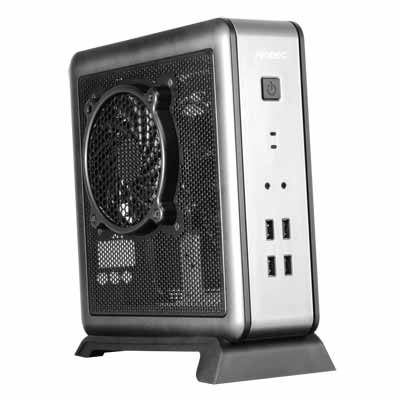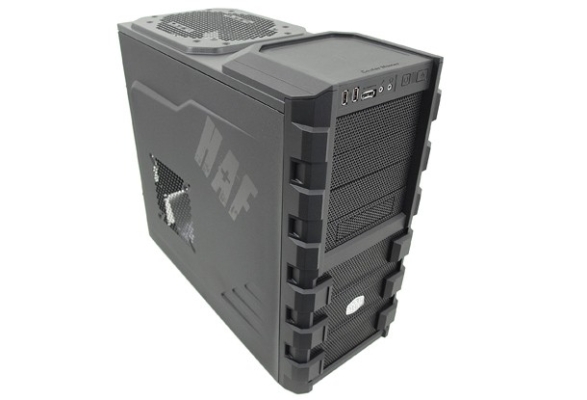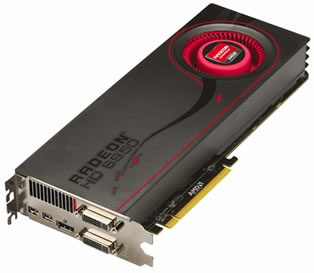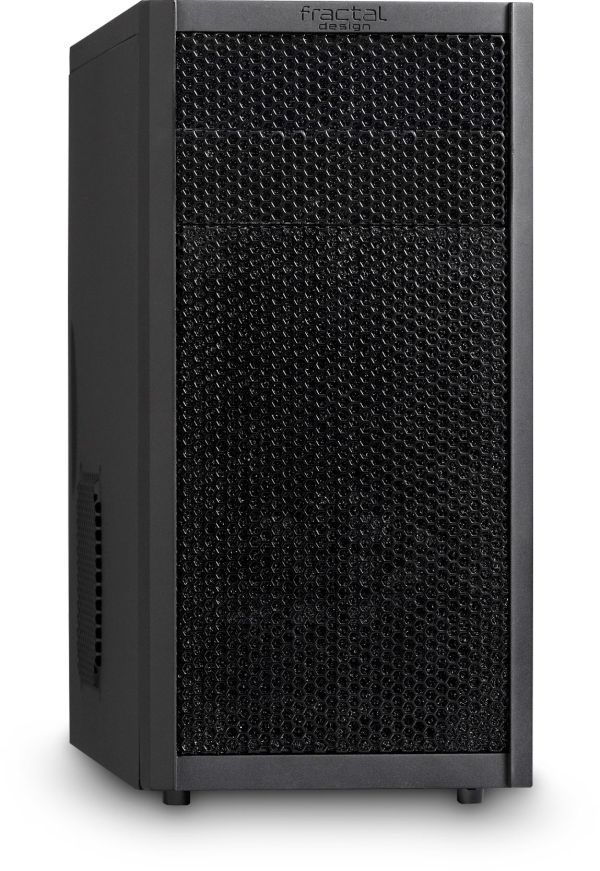Back To School Technology Buyer's Guide
by Zach Throckmorton on August 4, 2011 8:55 PM ESTBuild your own PC
You can usually build a desktop computer for less money than it costs to buy a comparably-specced system from a retailer. The discrepancy generally becomes greater as overall cost and capability go up. Additionally, many college students have access to very low cost Windows 7 licenses. For example, Windows 7 Ultimate costs students here at UW-Madison $64, while at Indiana University it's $20 and at the University of Michigan, $19 (Wolverines can also buy Vista for $9.50—curb your enthusiasm). Be sure to check with your specific college to see if you can get Windows (and other useful software) at a discount before paying retail prices for your OS. Because the cost of the OS varies dramatically from college to college, it is omitted from the following builds.
With that important consideration, let's get to the builds! We present here three configurations: a very tiny but capable mini-ITX system, a relatively small, inexpensive micro-ATX rig, and a more powerful mid-tower. We also suggest upgrades for each computer tailored to different uses.
Intel Mini-ITX System
| Intel Core i3 Sandy Bridge mini-ITX PC | |||||
| Component | Product Name | Cost | |||
| Case + PSU | Antec ISK 100 80W PSU | $85 | |||
| CPU | Intel Core i3-2100T | $135 | |||
| Motherboard | ASUS P8H61-I (Rev. 3.0) | $85 | |||
| Memory | Patriot 4GB (2x2GB) DDR3 SDRAM | $33 | |||
| Hard drive | Samsung Spinpoint MP4 HM320HJ 320GB | $48 | |||
| Total: | $386 | ||||

This mini-ITX system built in an Antec ISK 100 is more than powerful enough to handle web browsing, HD video playback, photo and video editing, many kinds of scientific analysis, and of course, office productivity. It's also sufficiently powerful that you should expect to be able to use it to perform these tasks for your entire four year undergraduate career. Best of all, its tiny case measures less than 9" tall by 9" deep by 4" wide. That's about the size of a hardcover novel (and smaller than an intro biology text!)—saving valuable real estate in a cramped dorm room, for example. Once assembled, it will weigh less than four pounds. It's important to note that the ultra low-profile heatsink that comes with the Core i3-2100T fits inside the ISK 100, but the stock heatsink that comes with the Core i3-2100 does not. Gelid makes a low-profile heatsink that would let you use a Core i3-2100 in the ISK 100 but it is difficult to find. Perhaps its only drawbacks given its size are that it lacks an optical drive and it is not a gaming computer, nor can it be upgraded to become a gaming computer. That said, there is room for two 2.5" hard drives, so you could certainly upgrade it for faster responsivity by adding an SSD or for more storage by adding a more spacious, slower 2.5" mechanical drive.
AMD Micro-ATX System
| AMD Athlon II X3 Micro-ATX PC | ||
| Component | Product Name | Cost |
| Case | Fractal Design Core 1000 | $50 |
| PSU | XIGMATEK ACXTNRP-PC402 400W | $35 |
| CPU | AMD Athlon II X3 445 | $75 |
| Motherboard | Biostar A880G+ | $55 |
| Memory | Patriot 4GB (2x2GB) DDR3 SDRAM | $33 |
| Hard drive | Western Digital WD5000AAKX 500GB | $40 |
| Optical drive | LITE-ON iHAS124-04 | $20 |
| Total: | $298 | |
While the AMD Athlon II X3 445 is slightly less powerful than the Intel Core i3-2100T in the mini-ITX system, it is nevertheless a potent processor up to most tasks, and certainly more than sufficient to provide four years of basic computing. This AMD CPU offers tremendous value—a lot of bang for the buck. Importantly, should you deem more power necessary in a few years, the six core Thuban CPUs will be simple, drop-in upgrades and by then, likely will cost less than $100. That said, the tri-core chip will remain a capable office system processor for four years. For an idea of how it performs, check AnandTech's Bench.
The Fractal Design Core 1000 is one of my favorite newer cases to hit the market. Its low price tag, quality construction, smaller size, and aesthetics are major selling points. At less than 17" deep by 7" wide by 14" tall, it's more compact than many micro-ATX cases, yet large enough to hold many hard drives, a bigger aftermarket CPU heatsink, and/or a larger GPU if you want to upgrade it. I find its thermals are slightly improved by moving the front intake fan to the rear of the case to act as an exhaust.
Biostar's A880G+ is a great value; it's a well-featured budget board that even has an HDMI port, and its integrated Radeon HD 4250 graphics are more than adequate for running Windows' Aero feature and Flash games. Perhaps its only drawback at this price point is its lack of USB 3.0 ports, which will become increasingly useful, though again at this low price, they aren't expected (and a USB 3.0 expansion bracket could be added later if the need arises). Finally, the Xigmatek PC402 400W PSU is relatively well-built for its price tag, and has a quiet 140mm fan.
This system could easily be turned into a respectable gaming rig by adding a discrete video card. Given the thermal limitations of the case at stock, I suggest adding a 120mm fan for better airflow. And given the limitations of the 400W PSU, I wouldn't add a GPU that's more power-hungry than a Radeon HD 6870, and even that would require a molex-PCIe adapter. The Radeon HD 6770 (the rebadged Radeon HD 5770) remains a very strong value for $100 or less after rebate, providing gamers acceptable frame rates or better at resolutions lower than 1080p with medium settings in all but the most demanding games.
Intel Mid-Tower System
| Intel Core i5 Sandy Bridge ATX PC | |||
| Component | Product Name | Cost | Rebate |
| Case | Cooler Master HAF 912 | $75 | -$10 |
| PSU | Antec Earthwatts 430W | $44 | |
| CPU | Intel Core i5-2500K | $220 | |
| CPU heatsink | Cooler Master Hyper 212+ | $30 | |
| Motherboard | Biostar TZ68A+ | $100 | |
| Memory | Patriot 8GB Gamer 2 Series (2x4GB) DDR3 SDRAM | $55 | -$20 |
| Primary storage | OCZ Vertex 2 solid state drive | $100 | |
| Secondary storage | Western Digital 1TB 5400RPM WD10EARS hard drive | $55 | |
| Video card | XFX HD-679X-ZDFC Radeon HD 6790 | $135 | -$15 |
| Optical drive | Samsung SH-222AB | $19 | |
| Total: | $833 | $788 | |

If you have more space than a typical dorm room (or think having a powerful computer is worth being even more cramped than usual in a dorm room), this midtower has all the bases covered. The Cooler Master HAF 912 features excellent thermals (HAF stands for high air flow), integrated mounts for 2.5" SSDs, solid cable management, and it's capacious enough for larger video cards and aftermarket CPU heatsinks. At 20" deep by just over 9" wide by 19" tall and weighing in at 18 pounds, it's probably not going to disappear if you inadvertently leave your room unlocked.
The Intel Core i5-2500K is an extremely potent CPU that will remain a very solid processor for four more years (think of how 2007's Q6600 is still a capable chip). Its performance metrics are available in Bench. The Cooler Master Hyper 212+ is a great value, and should allow you to overclock the CPU to 4GHz with minimal effort, though better chips can hit 4.5GHz and some even approach 5GHz. I've had excellent results from the Biostar motherboard in terms of overclocking, and its low price for a Z68-chipset board with all the bells and whistles makes it a compelling option. Of course, a system like this should have an SSD for overall responsiveness, and the OCZ Vertex 2 is a venerable stalwart at an increasingly low price. The 1TB low RPM hard drive offers plenty of storage, though you could certainly swap it out for a larger, faster (i.e. 7200RPM) hard drive if you'll be installing a lot of games that won't fit on the SSD and will benefit from not being put on a 'green' drive.

Finally, we've opted to recommend a Radeon HD 6790 because of its value, though a GeForce GTX 460 1GB might be worth spending a few dollars more for a bit better performance. If you want to spring for GPUs that will play the latest titles for a year or two longer than these, consider the AMD Radeon HD 6950 and NVIDIA GeForce GTX 560 Ti. These cards trade blows both in terms of performance and are priced at $200 or slightly higher.
While these do it yourself builds cover a range of typical college uses and needs, we recognize that many readers prefer retail, pre-built systems. Therefore a few models are discussed on the next page.











94 Comments
View All Comments
frozentundra123456 - Friday, August 5, 2011 - link
That sounds like a quite good idea. Can you just hook up a USB keyboard to a laptop and use it seamlessly, or do you have to somehow tell the laptop which keyboard is active??If you did this, you would save the cost of buying a laptop and separate desktop, but if you are very space limited, I am not sure that a laptop, external keyboard, and external monitor wouldnt take up as much space as a desktop. And you can set a desktop on the floor, while I am not sure you would want to do that with a laptop.
But I am not trying to put down your idea. It is a very valid and original alternative.
JarredWalton - Friday, August 5, 2011 - link
The problem is, a laptop that can compete with a desktop for performance will cost twice as much. You can build a $750 desktop that will outperform $1500 laptops. So, there's flexibility in getting a $750 laptop and $750 desktop in place of a single $1500 "do everything" laptop. It's not that you can't do it all on a laptop, of course, but there are certain things that will always be faster on desktops for less money (e.g. gaming).frozentundra123456 - Friday, August 5, 2011 - link
Jared,What you say is certainly true. However, if you only want to surf the net, do office type apps, and listen to music or watch videos, a 750.00 or even cheaper laptop is probably all the power you need. And I hate to admit it, but for gaming, a lot of college students probably use a console instead of the PC.
frozentundra123456 - Friday, August 5, 2011 - link
BTW, sorry about the misspelling of your name!JarredWalton - Friday, August 5, 2011 - link
No worries, and you're absolutely correct: if you don't care about gaming, honestly, Intel's IGP is perfectly adequate for 99% of users. You can watch videos without issue on any laptop made within the past four years (excluding Atom, of course), doing office work reached the point where a faster CPU didn't matter much back in the early 2000s, and surfing the net will generally be fast enough even on CULV and Brazos processors.If you're a parent buying a laptop for your college kid and you don't want them playing games? I'd recommend Brazos or an entry level Sandy Bridge as a good $400~$600 laptop -- or get a Llano laptop if you want gaming to be better.
TrackSmart - Friday, August 5, 2011 - link
At the very least, the option of a light-weight laptop plus external monitor should be part of this discussion. There are significant advantages to having only a single computer with all your files and programs always available.**Potential options if you expand your guide:**
Thinkpad X220 + External monitor
Toshiba Portege R835 + External monitor
13" Macbook Air + External Monitor
(These all weigh in around 3 lbs and have good performance, build quality, and battery life. I didn't list any of the Acer or consumer-level Sony laptops b/c I don't have confidence that they would last for 4 yrs...)
TrackSmart - Friday, August 5, 2011 - link
One more thing. Yes, this precludes PC gaming, but that's less of a trade-off in these console-dominated days...johnnywa - Friday, August 5, 2011 - link
Of all the laptops I've tried this with, both the usb keyboard and the laptop keyboard would remain active, so both can be used at the same time.I agree that this wouldn't save much space over just a regular desktop, but I think some people, like me, only want one computer (one single laptop as opposed to desktop + netbook), and don't want to worry about having to keep files synced across multiple computers using USB drives, Dropbox, etc. Thanks!
overseer - Friday, August 5, 2011 - link
If only the mini-ITX DIY setup consists of A75 ITX + low power Llano...Actually I've seen an ASUS A75 ITX MB the other day, so it just boils down to when AMD launches the 65W A8s and A6s.
Gigantopithecus - Friday, August 5, 2011 - link
Hi overseer - Where did you see a Llano ITX board?! I check Newegg, Ewiz, Amazon, etc. every morning and haven't seen one available yet. And I completely agree with your second sentiment - I can't wait for the 65W A-series APUs to be released!